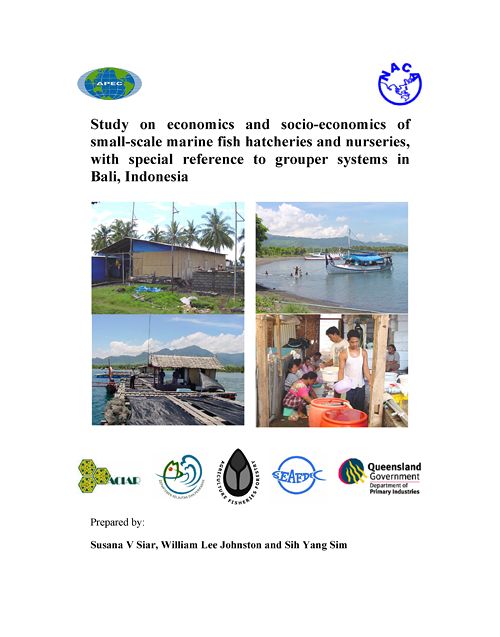Study on economics and socio-economics of small-scale marine fish hatcheries and nurseries with special reference to grouper systems in Bali, Indonesia
30 January 2004 | Susana V. Siar, William Lee Johnston and Sih Yang Sim | 1618 Downloads | .pdf | 2.16 MB | Hatchery and nursery, Indonesia, Livelihoods, gender and social issues, Marine finfish
The main objectives of the study were to describe the development of the small-scale or back yard multispecies hatcheries and their economic structure and benefits to the farmers and local community in Bali, Indonesia.
The social and economic impact of the back yard multi-species hatchery systems were analysed and details of the benefit of this system to the community described. Some of the negative impacts of the rapid development and success of the system are also provided. The report also provides details of the development of this system from early of milkfish hatchery systems, and the uptake of the new system by hatchery operators and its application to grouper species.
The economic study component detailed the data collection methods and analysis. The results of the economic statistics were presented in details based on standard economic analysis tools such as net present value, internal rate of return, benefit-cost ratio and payback period.
The strengths and weaknesses of the back yard multi-species hatchery system are described. Although this system is very successful, the main draw back is the demand for grouper fingerlings, as it is not recurrent, either locally or regionally. The key factors for further expansion on the system lies on the development of grow-out technology for grouper. There is also a need to develop advanced nursery phase for grouper fingerlings as currently this section of the industry has not been taken up by the local hatchery and nursery operators.
Creative Commons Attribution.

